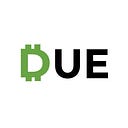How to Avoid Creating Misleading Invoices
There’s more to invoicing than just asking a client for money for the services or products you provided. It’s one of the best ways to keep your business growing. And the only way to do that is by avoiding misleading invoices.That may not seem like a biggie. But, invoicing accuracy is in fact a very big deal. That’s because sending accurate invoices builds trust among your clients and ensures that you get paid on-time. But to ensure that you avoid creating a misleading invoices here are pointers to keep in mind when creating your next invoice.
Make sure your invoices look professional.
Remember, your invoices are a reflection of your business. That means if they’re sloppy, full of of errors, and don’t include your logo or a watermark then clients will question your professionalism. They should also include pertinent information, such as contact information and itemized list of services or products, to eliminate any doubt of the invoice’s legitimacy.
To understand that your invoices are a reflection of your business just makes sense. You wouldn’t hand over your credit card or bank account information to just anyone on the street. You first need to trust that they’re on the up-and-up.
The good news is that most invoicing systems allow you to easily create professional looking invoices. For example, Due comes with templates that fit most brands and businesses. However, these templates can be customized so that you can include your logo, colors, and fonts.
To further verify that you’re legit, make sure to include pertinent information like:
- your name and contact information
- your client’s name and address
- the invoice number
- the invoice date
- a due date
- total amount due
- description of work or goods sold
- payment options
- payment terms
Double-check your numbers.
Creating a professional-looking invoice will only get so far, however, if your numbers don’t add-up — not good. Use a calculator even if you are a rockstar at math. If you charge too much, the client may assume that you’re swindling them. If you charge too little, they may believe that you’re incompetent.
To ensure that this doesn’t happen, always track your hours or product sales accurately. This way you’re accurately tracking any billable information to a T.
Additionally, create an invoice that contains accurate numbers. If you’re using a reliable accounting system this should be a breeze since you can create an invoice by using the data you already have on-hand.
And, most importantly, send your invoices in a timely manner. Sending an invoice to a client months after you’ve completed a project for them will definitely raise an eyebrow. This is because there’s a good chance they’ve completely forgot about the work you did for them.
In fact, always make sure that you send out a bill as soon as you complete a project. At the very least, you should invoice your clients every week. This prevents memories from fading while ensuring that you maintain a healthy cash flow.
However, to avoid any confusion, you should discuss when you expect an invoice to be paid prior to starting a project. This could be based on a payment schedule that you prefer or one that your client’s use, such as on the first of the month. For ongoing projects, consider recurring payments so that you aren’t invoicing them each month.
Give them options.
To put your client’s minds at ease, give them some options when it’s time to pay-up. For example, if they prefer receiving a paper invoice in the mail then offer that option. If they’re comfortable with receiving them electronically, then go that route.
Besides delivery options, offer multiple payment options. Remember, if you just started working with a new client they may not be comfortable giving you their bank account or credit card information. They may opt for options like PayPal or bitcoin. Also keep in mind that savvy individuals are aware that it’s illegal for telemarketers to ask for payments via;
- cash-to-cash money transfers — such as those from MoneyGram and Western Union.
- PINs from cash reload cards like MoneyPak and Vanilla Reload.
This means that if you’re only asking for those types of payments, you may be a scammer. But since you accept multiple payments, you’re more likely not playing them. These methods help you create the trust you need for business transactions.
No surprises.
An invoice should never surprise your clients. That’s why it’s so important to avoid creating misleading invoices. For example, if you charge $50 per hour for your services then that’s what the client should expect to see when they review the bill. If there are any unforeseen circumstances that have raised that fee, then you need to give the client a head’s up.
Don’t wait until it’s time to send the invoice. Give them a quick call or email so that you can explain the increase. I’ve found that if you’re honest and upfront, the client isn’t going to have any issues with the new rate.
As a general rule of thumb, invoices should only have agreed figures. If not, those unwelcome surprises will only tick off the client. If there is a change let the other party know ASAP.
Don’t forget the human touch.
Are you dealing with a larger company or a first-time client? If so, it’s probably a smart move to introduce yourself before billing them. A brief phone call or email to the individual in charge of billing. This way they “know” you when your invoice comes across the desk.
It’s a simple and effective way to avoid creating misleading invoices and build trust and speed-up getting paid.
How to Avoid Creating Misleading Invoices was originally published on Due by Albert Costill.
